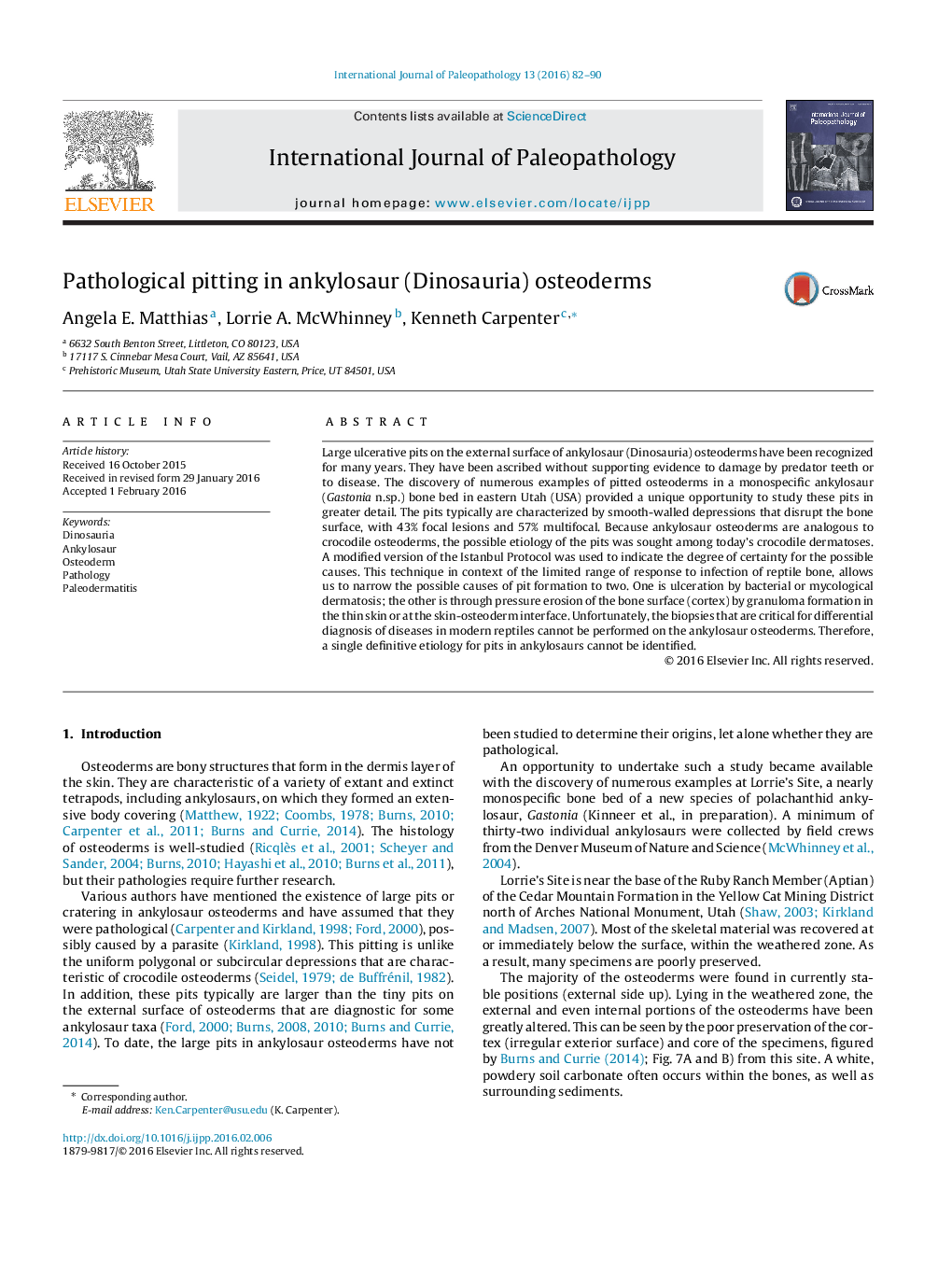| Article ID | Journal | Published Year | Pages | File Type |
|---|---|---|---|---|
| 6554820 | International Journal of Paleopathology | 2016 | 9 Pages |
Abstract
Large ulcerative pits on the external surface of ankylosaur (Dinosauria) osteoderms have been recognized for many years. They have been ascribed without supporting evidence to damage by predator teeth or to disease. The discovery of numerous examples of pitted osteoderms in a monospecific ankylosaur (Gastonia n.sp.) bone bed in eastern Utah (USA) provided a unique opportunity to study these pits in greater detail. The pits typically are characterized by smooth-walled depressions that disrupt the bone surface, with 43% focal lesions and 57% multifocal. Because ankylosaur osteoderms are analogous to crocodile osteoderms, the possible etiology of the pits was sought among today's crocodile dermatoses. A modified version of the Istanbul Protocol was used to indicate the degree of certainty for the possible causes. This technique in context of the limited range of response to infection of reptile bone, allows us to narrow the possible causes of pit formation to two. One is ulceration by bacterial or mycological dermatosis; the other is through pressure erosion of the bone surface (cortex) by granuloma formation in the thin skin or at the skin-osteoderm interface. Unfortunately, the biopsies that are critical for differential diagnosis of diseases in modern reptiles cannot be performed on the ankylosaur osteoderms. Therefore, a single definitive etiology for pits in ankylosaurs cannot be identified.
Keywords
Related Topics
Life Sciences
Biochemistry, Genetics and Molecular Biology
Physiology
Authors
Angela E. Matthias, Lorrie A. McWhinney, Kenneth Carpenter,
